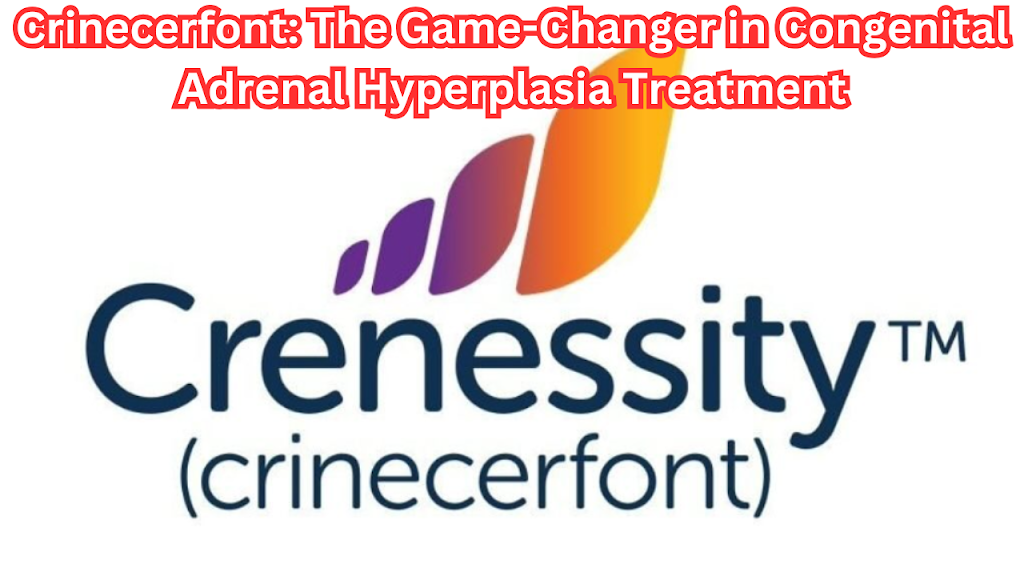
Breaking 70 Years of Silence: How Crinecerfont is Transforming CAH Care
Comprehensive Guide on Crinecerfont (CRENESSITY™): A New Era in CAH Treatment
Introduction to Crinecerfont
Crinecerfont has emerged as a promising treatment option in recent pharmaceutical advancements. Its journey through the FDA approval process and its development highlight the cutting-edge research in drug development. In this article, we will delve into Crinecerfont’s mechanism of action (MOA), its clinical trial phases, and its potential impact on healthcare.
What is Crinecerfont?
Crinecerfont is a groundbreaking drug designed to target specific pathways in medical conditions that require precision therapy. The Food and Drug Administration (FDA) plays a crucial role in overseeing its development and ensuring its safety and efficacy.
FDA Approval Process for Crinecerfont
The FDA approval process is rigorous, involving several stages of clinical drug development and trials. Crinecerfont successfully completed its Phase 3 clinical trial, which provided robust data on its efficacy and safety profile. These trials, part of the broader clinical trial process, focus on understanding how the drug works in real-world settings and its impact on patients.
Key Milestones in FDA Approval
- FDA Number and Registration: Crinecerfont received its unique FDA number, ensuring traceability and compliance with regulatory standards.
- Food and Drug Administration Database: Data from the trials were logged in the FDA database for transparency and monitoring.
- Breakthrough Therapy Designation: Crinecerfont was designated as a breakthrough therapy, expediting its review process.
Mechanism of Action (MOA) of Crinecerfont
Understanding the mechanism of action (MOA) is essential to appreciate Crinecerfont’s therapeutic potential. The drug works by modulating specific receptors in the body, addressing the underlying cause of the targeted condition. This targeted approach reduces side effects and enhances efficacy.
Clinical Development and Trials
Crinecerfont’s journey through Phase-III clinical trials showcased its safety and efficacy in a large patient population. Real-world data clinical trials further substantiated these findings, highlighting the drug’s potential in everyday clinical practice. The clinical trial phases included:
- Phase 1: Initial safety and dosage testing.
- Phase 2: Efficacy and side effect evaluation.
- Phase 3: Large-scale testing for safety and effectiveness.
Cost and Accessibility of Crinecerfont
The cost of Crinecerfont is a critical consideration for both patients and healthcare providers. While the exact pricing is yet to be finalized, it is expected to be competitive within its category. The FDA-approved drugs list often includes information on pricing and reimbursement options, ensuring wider access.
Structure and Dosing of Crinecerfont
The structure of Crinecerfont is a testament to advanced medicinal chemistry. Its design ensures optimal bioavailability and efficacy. Regarding Crinecerfont dosing, clinical guidelines suggest personalized dosages based on patient needs, ensuring maximum therapeutic benefit.
The Role of the FDA
The United States Food and Drug Administration (FDA) ensures that drugs like Crinecerfont meet the highest safety and efficacy standards. Through its comprehensive drug development process, the FDA oversees every stage, from initial research to post-marketing surveillance.
Future Prospects
With its successful Phase 3 clinical trial and approval, Crinecerfont is poised to transform the treatment landscape for its target conditions. Ongoing research and real-world data will further refine its use, ensuring it remains a cornerstone of modern therapy.
FAQs on Crinecerfont
1. What is the FDA full form?
The FDA full form is Food and Drug Administration, the regulatory body overseeing drug approvals in the United States.
2. How does Crinecerfont work?
Crinecerfont’s mechanism of action (MOA) involves targeting specific receptors to address the root cause of the disease.
3. What are the clinical trial phases?
The clinical trial phases include Phase 1 (safety), Phase 2 (efficacy), and Phase 3 (large-scale testing).
4. How can I get FDA approval for a drug?
The FDA approval process involves preclinical research, clinical trials, and submission of detailed data for review.
5. What is the cost of Crinecerfont?
The cost of Crinecerfont will depend on insurance coverage and market factors but aims to be accessible.
6. What is the role of real-world data clinical trials?
Real-world data clinical trials provide insights into a drug’s performance outside controlled clinical settings, ensuring broader applicability.
7. How to apply for clinical trials?
To apply for clinical trials, visit the FDA database or clinical trial registries to find ongoing studies and eligibility criteria.
Conclusion
Crinecerfont represents a leap forward in targeted therapy, offering hope to countless patients. Its successful journey through the FDA approval process and robust clinical trials underscores the importance of innovative research in modern medicine. For more information, consult the FDA-approved products list or contact the Food and Drug Administration for further details.
Read more like this-Ifosfamide: The Cancer Drug That Could Change Your Life
Comments